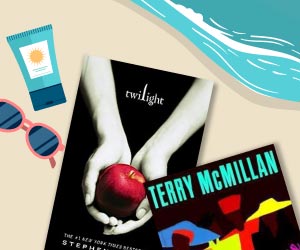Life of Pi: A Novel
Select Format
Select Condition 
Book Overview
A MODERN CLASSIC AND INTERNATIONAL BESTSELLER WINNER OF THE MAN BOOKER PRIZE "A story to make you believe in the soul-sustaining power of fiction."--Los Angeles Times Book Review After the sinking of... This description may be from another edition of this product.
Customer Reviews
Rich fantasy, or is it?
Amazing book!
life of pi is full of adventure, animal life, will to live, the value of improvisitation, and nature
El ingenioso Pi
A wonderful follow up and a superb work with its exuberant images.
I Once Caught a Bengal Tiger This-s-s-s Big
Amazing and symbolic - I loved this book
Life of Pi Mentions in Our Blog

With your toes in the sand, the sun on your face, and the roar of the surf drowning out your worries, reading at the beach is a double dose of escape. But what makes the perfect beach read? Depends on the reader. From frothy rom-coms to twisty thrillers, generational sagas to moving memoirs, our favorite beach reads run the gamut. Here are 29 beach-perfect books.

Celebrate #NationalPiDay with 3.14 pieces of your favorite pie (à la mode, according to our recent poll), 3.14 slices of your favorite pizza (pie), 3.14 chapters of The Life of Pi, or by seeing how many decimal digits of Pi (π) you can memorize and say aloud. (FYI, there are over a trillion, so hydrate first.)

For all of our "get the last word in" readers (you know who you are!), here are some famous last lines to applaud, echo, laugh at, and think about.






